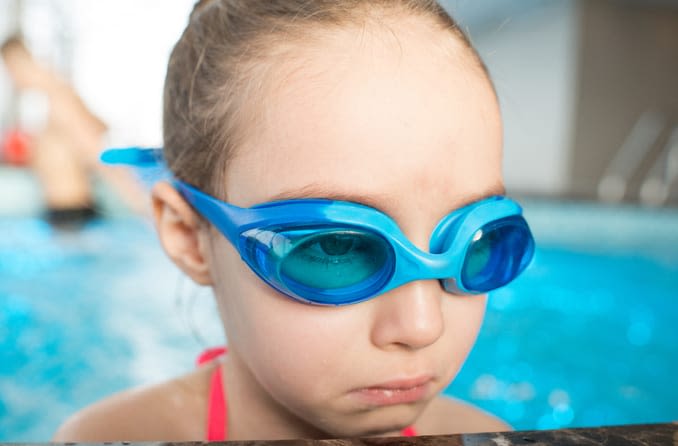Why you should avoid swimming with pink eye

Can you go swimming if you have pink eye? Technically, yes, but it’s not a good idea for several reasons.
Viral and bacterial forms of conjunctivitis are highly contagious, spread quickly and are uncomfortable for all who experience them. If you have pink eye, it’s important to prevent the condition from worsening and keep it from spreading to other people.
Why you should avoid swimming with pink eye
There are several complications that can arise if you swim while you have pink eye. From worsening symptoms to an increased risk of spreading your infection with other swimmers, it’s usually best to just avoid swimming until your infection has resolved.
Here are a few of the biggest reasons why avoiding the water is important when you have pink eye:
Other swimmers can become infected
According to the U.S. Centers for Disease Control and Prevention (CDC), you should not use swimming pools if you have pink eye. Bacterial and viral conjunctivitis are extremely contagious, and it’s possible to spread the infection to others in pools — even if the water is chlorinated. Plus, chlorine can worsen the condition, but we’ll get to that shortly.
Pink eye can spread during activities in the water or even just by sharing objects by the pool, such as towels, sunscreen and goggles.
SEE RELATED: 10 pink eye (conjunctivitis) prevention tips
Chlorine can increase discomfort
Chlorine is a chemical irritant that can increase any discomfort caused by conjunctivitis. It also washes away the tear film that protects your eyes and keeps them moist and clear. According to the American Academy of Ophthalmology, when chlorine disrupts the tear film, it leaves the eyes vulnerable to chemicals and bacteria in the water and can lead to feelings of grittiness, dry eye, redness and blurred vision.
But chlorine isn’t the only problem — outdoor swimming pools often also include bird (and human) feces, urine, insects and other debris. Eyes are already sensitive to these factors, but throwing an eye infection into the mix is a recipe for disaster.
Although the salt in saltwater pools is not as harsh an irritant as chlorine, it can still cause red eyes and other general discomfort.
SEE RELATED: Why does saltwater burn your eyes?
Fresh water adds exposure to bacteria
Aside from chlorine and saltwater pools, going for a dip in a nearby lake can also be dangerous for your eyes, especially if you have pink eye.
When an eye is already infected, it may be more susceptible to additional infections from bacteria and other pathogens found in lakes.
Can you swim with pink eye if you wear goggles?
While goggles are recommended to keep water and chlorine from entering eyes in general, they may not be able to prevent an infection from spreading to others or from becoming more infected.
Plus, if another swimmer mistook an infected swimmer’s goggles as their own and wore them around their eyes, it could quickly lead to another infection.
Other eye protection, such as sunglasses, likely will not be enough to prevent an infection from spreading.
When is it safe to swim again?
If you swim with pink eye, you risk a longer-lasting infection, further discomfort and the possibility of spreading your infection to other swimmers. Simple precautions are not enough to keep a lid on pink eye when it comes to swimming.
So how long do you have to wait before you can swim again? Individual conditions and treatments for pink eye may vary for each person, and it can take from a few days up to a few weeks for conjunctivitis to heal. Consult your eye doctor before making another splash so you can be sure it’s safe for a swim or to join the fun at a pool party.
In the meantime, take care of your pink eye at home as much as possible. Cool compresses are suggested to help relieve itching associated with viral and allergic conjunctivitis, and you can use warm compresses and eye drops for bacterial conjunctivitis symptom relief.
READ NEXT: How safe is it to open your eyes underwater?
Page published on Friday, August 28, 2020




